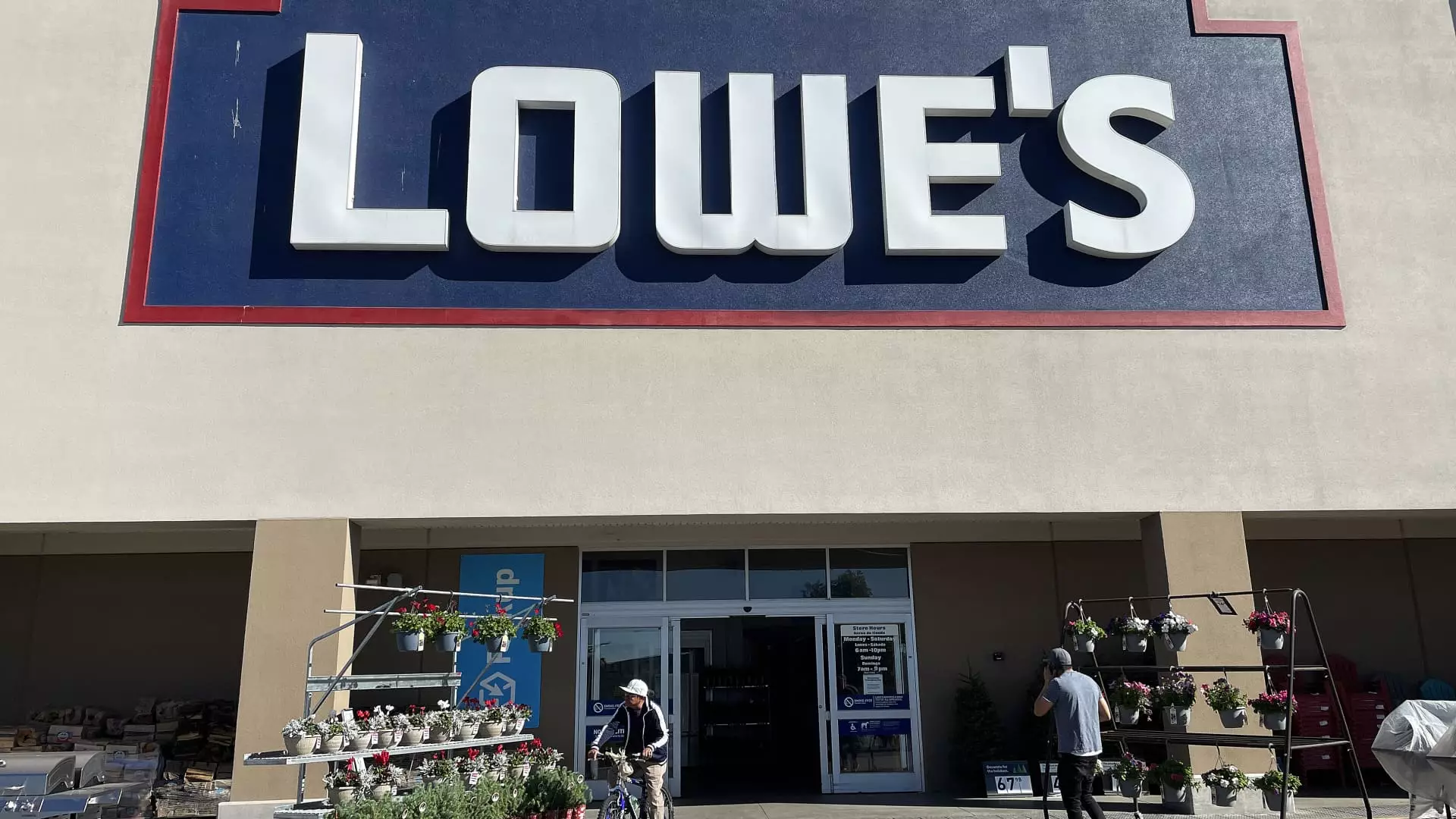Lowe’s recently released its quarterly earnings report, surpassing Wall Street’s expectations in both earnings per share and revenue despite a decrease in sales of pricey items bought by do-it-yourself customers. While its rival, Home Depot, fell short of revenue expectations due to market challenges and delayed seasonal trends, Lowe’s managed to stay afloat and even affirmed its full-year forecast.
Lowe’s anticipates total sales for the year to range between $84 billion and $85 billion, indicating a decline from the previous fiscal year. The company also expects a decrease in comparable sales by 2% to 3% compared to the prior year, with estimated earnings per share falling between $12 to $12.30. These projections come after Lowe’s reported net income of $1.76 billion, or $3.06 per share, in the first quarter, compared to $2.26 billion, or $3.77 per share, in the same period a year ago.
In comparison to Home Depot, Lowe’s garners a smaller portion of its business from professionals such as painters and contractors, which generally provide a more stable source of revenue. Home Depot relies on professionals for about half of its sales, whereas Lowe’s only gets around 20% to 25% of its sales from this segment. Despite this difference, Lowe’s has been actively trying to attract more professional customers to bolster its revenue streams.
CEO’s Strategic Approach
CEO Marvin Ellison highlighted the company’s gains with professional customers and growth in online sales as factors that helped offset the decline in do-it-yourself spending. This strategic shift towards engaging more professionals and enhancing online sales channels has set Lowe’s on a path towards stability and growth despite recent challenges in the market.
Market Performance and Future Outlook
Lowe’s market value currently stands at $131.13 billion, with its stock price showing a modest 3% increase this year, lagging behind the S&P 500 gains of 11%. Looking ahead, Lowe’s must continue to navigate the turbulent market conditions and consumer behavior changes to sustain its growth trajectory and meet investor expectations. As the company continues to evolve its business model and customer engagement strategies, stakeholders eagerly await updates on its progress.

Leave a Reply